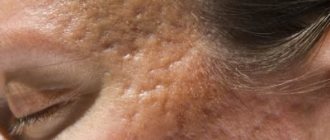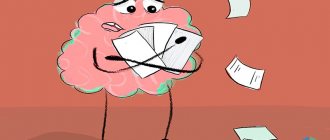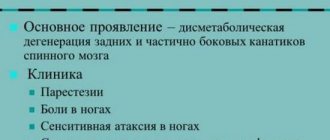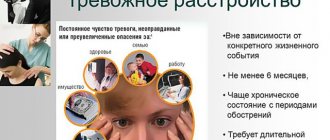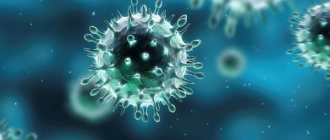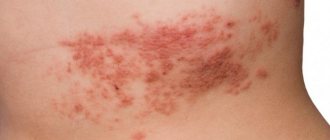Eustress
In another way it can be called mobilizing or constructive. When experiencing eustress, a person feels a surge of strength and inspiration. It usually manifests itself when performing a specific task or achieving a goal. A striking example of eustress is speaking in public. Many people are afraid of being in such a situation and experience great anxiety. But when they go on stage, they suddenly gather themselves and perform brilliantly with some number or speech. This is all due to the fact that eustress tapped into a person’s hidden potential. At this moment, attention, energy, concentration are at the highest level.
We must understand that positive stress is not always associated with pleasant events. For example, an exam at a driving school is not a joyful event, but the goal achieved outweighs all the unpleasant moments. And just with its achievement, stress disappears and the body returns to its normal state.
Distress
This is a destructive or destructive form of stress, which is always associated with the appearance of negative emotions in a person. Constant tension has a depressing effect on a person’s mental and physiological state. Let's take a road accident as an example. In itself, this event is already a lot of stress, but it is added to unforeseen financial expenses for repairing the car and a long recovery period if there were physical injuries. The victim begins to worry and worry almost continuously, which inevitably leads to distress.
At the same time, an event cannot always be characterized as clearly negative; sometimes it can be something related to emotions. For example, dissatisfaction with your figure or dissatisfaction with an unrealized opportunity, which causes a feeling of guilt and regret.
There are three types of distress:
physiological – when negative emotions are caused by health problems or associated with appearance defects;
- psychological - caused by the presence of complexes, phobias and fears, lack of self-acceptance or constant residence in illusions that are radically different from real circumstances;
- nervous - occurs as a result of severe internal overstrain, which can be provoked by various negative factors, often a consequence of neurosis - in this case, treatment of distress using drugs to balance emotions is recommended.
Main symptoms
The clinical picture of most lesions of the gastrointestinal tract is nonspecific. Dyspeptic symptoms include the following symptoms:
- Heaviness after eating. At the same time, patients talk about a decrease in body weight, that is, the caloric content of the diet often remains reduced.
- Formation of heartburn and belching. Postprandial distress syndrome is characterized by the onset of similar symptoms almost immediately after eating food.
- Epigastric pain syndrome is the main complaint with this pathology. Patients report intense cramping in the upper abdomen. The intensity of the symptom varies from an unpleasant feeling of heaviness to severe abdominal pain.
- Patients experience increased gas formation. Flatulence can also be combined with increased intestinal motility. This cascade of reactions often leads to diarrhea.
- In some cases, intense epigastric pain is associated with hypoglycemic syndrome. Normally, eating food is accompanied by an increase in blood sugar levels. The carbohydrate concentration is maintained for a long period of time, but with pathology it rapidly decreases.
Postprandial distress syndrome is characterized by a long-term chronic course. Symptoms bother patients for several months. Most often, patients seek medical help when discomfort does not go away within 4–5 months.
In some cases, the symptoms of this disorder are associated with more severe changes in homeostasis. Scientists talk about the role of the function of the adrenal cortex in the formation of the clinical picture of postprandial syndrome. Because of this, there are difficulties in further treatment of the disorder, since the latter is associated not only with disruption of the gastrointestinal tract. Researchers associate the appearance of discomfort after eating with fluctuations in the level of adrenal hormones. At the same time, for further treatment to be effective, it is necessary to differentiate a number of pathologies that occur with similar symptoms.
Many patients with an endocrine nature of the lesion show chronic clinical signs of mental disorder. Such people are either overly excited or suffer from apathy and depression, which is associated with the prevailing concentration of hormones. In some cases, such problems can be dealt with through the use of medicinal herbs. Rhodiola and licorice root show good results. Some doctors are inclined to justify prescribing specialized drugs. In this case, diet forms the basis of therapy for this disease.
The relationship between eustress and distress
The main difference between the first and the second is the duration of the stressful state. If it was short-lived, lasted a couple of hours or days and went away safely on its own, this is eustress. If it lasts for several weeks or months and worsens well-being and quality of life, it is distress. This means that the body has entered a phase of exhaustion.
Sometimes distress can flow smoothly from eustress. For example, a promotion at work is a desired event for many: high status, recognition from colleagues and management. The person experiences joy and inspiration. But at the same time, this is a great responsibility, many new responsibilities that can cause fear of making mistakes, not meeting expectations and ultimately losing your place. In this case, a person begins to experience enormous stress and constructive stress turns into destructive.
Symptoms and consequences of distress
Your body has entered a self-destructive phase if you experience the following signs of distress:
sleep problems,
- energy is at zero,
- physical weakness
- constantly in a bad mood
- aggression and irritability towards everything appear,
- scattered attention and low concentration.
Also, this form of stress can be accompanied by somatic headaches. If nothing is done, the consequences of distress can be quite serious, including the development of clinical depression. It also contributes to the acquisition of bad habits (alcohol, drugs, cigarettes), which supposedly help relieve nervous tension, but in fact only aggravate the situation.
Symptoms
The main symptoms of ARDS are:
- Dyspnea,
- Chest discomfort
- Dry cough,
- Rapid breathing
- Cardiopalmus,
- Blueness of the skin,
- Auscultation - bilateral scattered wheezing,
- Participation of intercostal muscles in the act of breathing,
- Moan as you exhale,
- In newborns - regurgitation or vomiting, periods of apnea for more than 10 seconds, attacks of asphyxia,
- Physical inactivity,
- Hyporeflexia.
In severe cases, signs of increased bleeding appear. After recovery, patients require long-term rehabilitation. This is associated with the development of sclerotic changes in the lungs.
Treatment and prevention of distress syndrome
Whatever the reasons for the anxious state, for successful treatment of distress syndrome it is necessary to create a calm environment around yourself. This applies to both work and home. If this is not possible, then it would be best to take a vacation and go somewhere quiet for a couple of weeks, where you could put your thoughts in order. Also helping to achieve peace of mind:
- full sleep,
- correct daily routine,
- balanced diet,
- physical exercise.
Compliance with these conditions is also the prevention of distress. And also an excellent preventative measure would be to have a favorite hobby, by doing which you can take your mind off all your worries for a while and get pleasure and positive emotions from what you do.
But if the anxiety condition has become chronic, and you have been suffering from it for a long time, this is a reason to seek professional help. A course of psychotherapy and medications to balance emotions will help you get your life back and feel like a happy person again.
Diagnostics
Increasing shortness of breath with tachypnea and diffuse cyanosis, which cannot be eliminated by oxygen therapy through a face mask, can be suspected of respiratory distress syndrome. When auscultating the lungs, one notices a very rapid (within several hours) change in the nature of breathing - from hard breathing at stages 1-2 to diffuse wheezing at the beginning of stage 2 and “silent lung” at the end of the second - the beginning of the third.
To confirm the diagnosis, it is necessary to take an x-ray of the lungs - the x-ray often reveals a typical symptom of a “blizzard”. When examining blood gases, a sharp decrease in oxygen saturation is noted - less than 50 mm Hg. Art. in arterial blood. During spirometry, it is possible to establish a decrease in tidal volumes and a decrease in the compliance of the lung tissue.
Stress and distress: what is the difference between the concepts
According to the theory born by the author of this term, Hans Selye, stress does not have exclusively negative characteristics, but acts as a natural response of a living organism to an external stimulus presented to it. At the same time, a stressful state has a positive function for a person.
The true purpose of stress is to mobilize all the body’s resources for rapid adaptation to changed living conditions. At the same time, activation of the activity of organs and systems occurs not only when receiving signals from stimuli of a negative tone. Stimulation of body functions is also observed when signals are received from stimuli that are pleasant to the subject.
Stress, in its essence, is a natural mechanism inherent in nature, triggered in situations that require adaptation, and signaling the need to increase the speed of processes in the body. Stress is an impetus to search for new constructive options for responding to changed living conditions.
The condition that the average person is accustomed to calling stress is called “distress” in academic circles. Distress is a phenomenon that leaves behind serious mental trauma. This is a condition that deeply wounds the heart and greatly disturbs the soul, creating unhealed wounds (read about mental pain). Actually, distress is the provocateur of nervous breakdowns and the instigator of various neurotic disorders. Nothing more than distress is the culprit of prolonged depression and initiates obsessive anxiety states.
Stress.
Stress. Ways to get out of stress.
- The concept of "Stress"
The term “stress” refers to a human condition that occurs in response to a variety of external and internal strong influences (stressors). The concept of stress is inextricably linked with the name of Hans Selye, who described it as a nonspecific response of the body to any change that requires restructuring and adaptation. During periods of stress, adaptive changes are observed at the physiological, mental and behavioral levels. In other words, stress can be defined as the body's multicomponent response to any stressful event. It should immediately be emphasized that a stressful event can be not only a negative emotional situation (illness, death, divorce, job loss, failure in an exam, etc.), but also a positive event if it requires adaptation and adaptation to a new, unusual situation . An example of obviously positive stressful events can be the birth of a child, entering college, obtaining a higher position, buying an apartment, long-awaited marriage, etc. These both negative and positive events have one thing in common - they require a person’s adaptation to new, changed conditions existence. Consequently, any significant change in usual life can be attributed to a stressful situation. That is why we can state that life without stress is impossible, and every person constantly faces stressful situations throughout his life.
Many people have only negative associations with the word “stress”. In fact, there are two types of stress:
•Beneficial stress, or eustress. To live a full life, everyone needs a small dose of beneficial stress - without it, our body would have a hard time. For example, in order to get out of bed in the morning and go to work, you need to fully wake up. And in order to work productively and with pleasure, a person needs an awakening reaction, or eustress (a small portion of adrenaline). Let's call this state the “awakening reaction.”
•Harmful stress, or distress, occurs when tension reaches a critical point when there is no more strength to fight it. For example, if lack of sleep is already chronic. This is the emotional state we mean when we say we are “stressed.”
Stress is a systemic reaction of the body to something biological. chemical, physical, or psychological influence (stressor) that has adaptive significance. In a broad sense, stress is a nonspecific response of the body to any demand presented to it. Stress can be understood as any changes in human life that require adjustment (adaptation) to changed living conditions.
- PSYCHOLOGY OF STRESS
Stress primarily affects human psychology and behavior. Most often the behavior changes as follows:
- the person becomes very irritable
- reacts inadequately to the slightest difficulties
- become less active, as a result of which you do not have time to do what you planned
- the number of successfully completed tasks decreases
- a person has a frequent desire to argue
- he becomes overly critical of things that previously suited him well
- a person feels the need for alcohol, or other substitutes, to increase self-confidence
- he is in a constant state of despondency and self-pity
- a person loses control over the situation: he cannot cope with many problems that require simultaneous and immediate solutions
- a person often experiences such undesirable body reactions as: rapid heartbeat, upset stomach, sweating, fever and skin rashes
- a person is inclined to explain these manifestations simply by the complication of life, considers it impossible to control a changing situation and does not even try to do this.
- Despite the fact that our site is primarily intended for those people who are interested in the topic of stress, and do not engage in psychology professionally, I would like to dwell in more detail on such an issue as types of stress. We are all accustomed to perceiving stress as a harmful factor that is identical in its manifestations, but in fact, stress can be different and, accordingly, the approach to them should be different. Let's consider the conditional division of stress into different types.
Types of stress.
Acute stress. Its varieties include: a situation of conflict - conditions of conflicting demands;
frustration – blocking the realization of a significant (urgent) need;
crisis is an “era of change”, when there is a need for a sharp change in activity patterns.
Chronic stress. A person is not faced with massive and intense effects on the psyche, as with acute stress, but with moderate or even weak ones, but constantly repeated and long-lasting. The defensive reaction to ongoing or repeated exposure to a stressor includes three stages, united by the concept of “general adaptation syndrome.”
In the first stage - anxiety - changes occur in the body such as muscle tension, rapid breathing, accelerated pulse, increased blood pressure, and a feeling of anxiety. It reflects the mobilization of all resources in the body. At the same time, the body’s resistance decreases, and if the stressor is strong enough, death may even occur.
In the second stage, resistance, the body begins to adapt to the ongoing effects of the stressor. During this stage, increased resistance to stressors is established. The body's resistance (resistance) to it becomes higher than the initial level.
The third stage – exhaustion, which occurs when exposed to super-strong or super-long-term stimuli, is accompanied by a decrease in the body’s resistance and in severe cases can lead to its death.
Selye divided stress into constructive and destructive, emphasizing that not all stress is harmful. Constructive stress, having passed the stage of anxiety, ends with the body adapting to a new situation and increasing its stability. However, if the stress factor is of great intensity or duration, if it is incorrectly assessed, if several stress factors are combined and the body is weakened for other reasons (due to hereditary or congenital weakness of defense mechanisms), then stress can become destructive. In such cases, adaptation reactions reach the level of exhaustion and processes of destruction are launched - protection through illness, maladjustment.
Disadaptation is a state of disturbed homeostasis (the dynamic balance of the body and the external environment), which occurs when the protective mechanisms are exhausted and the effect of the stress factor has not been completely neutralized. A stress factor is any influence coming from the external environment or occurring inside the body that causes a stress response.
- Eustress and distress.
Stress can be divided into two types – eustress and distress. Eustress has a positive effect on a person, mobilizes him, improves attention, reactions, mental activity, and increases the adaptive capabilities of the body.
Eustress is activating stress. When tension becomes too much, excessive fussiness occurs. This is not good for your health. What happens to a person under stress? In a state of eustress, the pulse increases to 90-100 beats per minute. In a state of distress - over 100 beats with a decrease in the pulse wave. With eustress, blood pressure rises moderately. With distress, two types of reactions are possible: either a sharp increase in blood pressure, or a sharp drop. Breathing in a state of eustress is usually increased. With distress it becomes more frequent. The skin's reaction to stress is characteristic. With eustress, redness occurs. When distressed - paleness or the appearance of red and white spots on the skin. Eustress causes a feeling of warmth, sometimes a feeling of “heat.” Distress is most often accompanied by chills. Let's see how the course of mental processes changes under stress. Attention improves with eustress. The ability to concentrate, switch and distribute attention increases. The problem to be solved is seen especially clearly. Activity is predicted several moves ahead. Expanding your attention span gives you an amazing sense of focus. Memory also improves with eustress. A person remembers faster and more successfully, and easily recalls forgotten things. In a state of distress, memory deteriorates. A person reads a text several times, but is unable to remember it. When distressed, speech is impaired. A person “swallows” letters and words, stutters, uses parasitic words “like”, “as if”, “so to speak”, “this” and others.
Distress is a pathological type of stress syndrome that has a negative impact on the body, mental activity and behavior of a person, up to their complete disorganization. Distress is accompanied by hyperactivation of neurohumoral systems and can become a pathogenic factor leading to damage to almost any organs and systems of the body. Distress can lead to the onset or aggravate the course of neurotic, psychosomatic and organic diseases. What type of stress will arise in a particular person depends on a combination of many factors: physical and mental health, personality characteristics, habitual response to stressors, the system of individual psychological defenses, the presence or absence of social support in a situation of stress. Stress resistance is characteristic of physically healthy, emotionally stable individuals with an active life position, low anxiety and adequate self-esteem.
Stress tolerance is mainly characteristic of passive, dependent, highly anxious individuals or those prone to depressive and hypochondriacal reactions; it increases with lack of sleep, physical or mental exhaustion, after an illness, etc. Undoubtedly, the strength and duration of the stressor itself plays a role. There is a test to measure the amount of stress a person experiences in everyday life, which was proposed by researchers Holmes and Ray. This test contains more than 40 possible stressful life events, each of which has a different score depending on the amount of effort a person needs to overcome a particular life situation. Distress manifests itself differently in different people, but it also has universal characteristics. One of the obligate signs of distress is anxiety. A certain level of anxiety is characteristic of each individual, and everyone has their own optimal level of anxiety, which allows a person to function optimally. Unproductive anxiety disrupts cognitive and autonomic processes, impairs attention and memory, reduces performance, increases irritability, causes excessive muscle tension, reduces appetite, and disrupts sleep.
The role of distress in the formation of psychovegetative disorders. Autonomic changes following distress are very diverse and can manifest themselves in almost all organs and systems of the body. Symptoms from the cardiovascular system are often manifested by an increase in heart rate, a feeling of pulsation, an increase or fluctuation in blood pressure, and a tendency to lipothymic states. From the respiratory system, there may be a feeling of lack of air with the formation of hyperventilation syndrome. From the gastrointestinal tract, nausea, retching, vomiting, loss of appetite, diarrhea or constipation, and abdominal cramps are common. Distress is also characterized by other vegetative manifestations: increased sweating, chills, feeling hot or cold, feeling dizzy, and frequent urination. The important role of stress in the occurrence of panic attacks or autonomic crises is discussed. A panic attack should be considered one of the most striking manifestations of a psychovegetative syndrome, in which a polysystemic pattern of autonomic disorders and a strong emotional accompaniment in the form of panic are observed. Among the situations that can lead to the onset of panic attacks are the following stress-related events: significant changes in life (long-term illness or death of a loved one, divorce, separation from loved ones, etc.); events associated with changes in one’s own health (physical overload, prolonged fasting, pregnancy, abortion, childbirth, surgical interventions, somatic diseases) and, finally, exacerbations of conflict situations provoked by stress. Stress also disrupts motivational processes: appetite changes and libido decreases.
The literature describes a reliable number of facts of a significant increase in cardiovascular mortality after people experience extreme stress (natural disasters, man-made disasters). For example, in the controlled ONSET study (MA Mittleman, 1995), which included 1,623 patients with non-fatal myocardial infarction, it was found that within two hours after experiencing intense anger, the cause of which was most often a family quarrel (25% of observations) or conflict at work (22% of cases), the relative risk of developing myocardial infarction significantly increased by 2.3 times. Another five-year prospective study (95,647 people) found that the risk of coronary death after the death of a loved one increased by 2 times in men and 3 times in women.
MAIN TYPES OF HARMFUL STRESS (DISTRESS):
Psychological stress, as a rule, appears in situations associated with the experience of strong emotions. Any situation that does not outwardly pose a threat to a person, but causes strong emotions, becomes a cause of psychological stress. Moreover, it doesn’t matter whether positive or negative emotions are the cause - the body reacts to a deviation from the norm of “plus” or “minus” in the same way.
Physiological stress occurs as a result of exposure to external factors such as cold, heat, pain, thirst, hunger, etc. A very telling example is the body’s reaction to diets. When a person goes on a diet, he thereby consciously limits himself to one or another food or quantity that is familiar to him.
Short-term stress is the most natural stress - it is closely related to instincts, for example, a reaction to a sharp sound, sudden movement. This type of stress is characterized by suddenness and rapid passage of all stages of stress. As a rule, the effect of such stress is very short and does not pose any danger.
Chronic stress is the most dangerous type of stress. Many people confuse it with post-traumatic stress disorder or syndrome. Chronic stress is the kind of stress to which you are constantly exposed, which goes with you in the background throughout life and you are so accustomed to it that you don’t seem to notice it. For example, something permanently irritates you, some situation in life that you are in and which you think you cannot escape. Chronic stress is dangerous because it often leads to nervous breakdowns, depression and suicide. Chronic stress is also closely related to fears and phobias.
Nervous stress. Basically, this name is a kind of compilation of everyday ideas of the level “all diseases are from nerves” and “stress is harmful
Emotional stress. This type of stress, one way or another, is associated with our emotions and emotional reactions.
Intrapersonal stress. Be at peace with yourself! How important this is and how often we fail to achieve it. Our internal experiences, discontent, and confusion begin to manifest themselves as irritability, dissatisfaction, and as a result, stress develops. Our unfulfilled needs, unfulfilled dreams, desires, hopes, etc. usually lead to intrapersonal stress.
Work stress. The desire to make a career and at the same time a prolonged lack of results or simply a high workload, and it doesn’t matter what kind of work you do, physical or mental, but if the work causes chronic fatigue and private negative emotions, this can turn into work stress. It is often associated with unfair job evaluation, role ambiguity, and even poor job security.
Financial stress. We live in a world where money plays a big role in a person's life. We purchase food, necessary household items, pay for entertainment and rent, and much more. Situations where our expenses are significantly greater than our income can lead to a type of stress such as financial stress. Unexpected expenses and unplanned expenses, the inability to take out a loan for a necessary purchase, low wages, etc. can lead to stress.
Social stress. We are in society and can rarely avoid the problems that arise in it. Social stress develops in a certain group of people. The cause of social stress can be economic, political problems, etc.
Environmental stress. Adverse environmental factors directly affect our health. A variety of factors, including exposure to chemicals, noise, polluted water, etc., negatively affect the body as a whole. Both these reasons and the expectation of the adverse effects of poor environmental conditions lead to environmental stress.
This division of stress into types is very relative; there are other classification options.
SYMPTOMS OF STRESS (DISTRESS):
- Frequent illnesses, weakening of the body's immune system
- Sexual function disorder
- Headaches, stomach pains, peptic ulcers
- Deterioration of sleep
- Loss of appetite or, conversely, excessive gluttony
- Changes in food preferences: if before, for example, you didn’t want a lot of spicy or sweet foods, then in a state of stress, on the contrary, you want a lot.
- Increased excitability: more often you want to be irritated, angry, angry, laugh for no reason.
- The role of stress in the development of diseases is expressed in the disruption of the functioning of the target organ:
- - brain - deterioration of blood supply due to vasoconstriction, oxygen starvation of cells;
- - nervous system - neurosis;
- - cardiovascular system - arrhythmia, hypertension, coronary heart disease;
- - respiratory system - shortness of breath, chronic hyperventilation, dysfunction of bronchial smooth muscles;
- - gastrointestinal tract - digestive disorders, gastric and duodenal ulcers, ulcerative colitis;
- - genitourinary system - inflammation of the bladder, menstrual irregularities, erectile dysfunction;
- - muscular system - maintaining high muscle tone even at rest;
- – joints – rheumatoid arthritis;
- - skin - urticaria, eczema, psoriasis;
- - immune system - decreased immunity.
- Prevention of stress. Coping – mechanisms.
Prevention of stress and its consequences is an extremely urgent task. Reducing the manifestations of multisystem stress reactions should be carried out at the earliest stages before the development of certain pathological conditions. Excessive anxiety, as the first and obligate sign of any distress, plays a decisive role in the formation of the initial manifestations of psychovegetative syndrome. Psychotherapy, autogenic training, physical therapy, physiotherapy and herbal medicine play a significant role in the treatment of stress-induced anxiety reactions and psychovegetative manifestations. In advanced clinical conditions, treatment with psychotropic drugs, mainly antidepressants and tranquilizers, is used. The latter are used too widely in clinical practice, even for subsyndromal psychovegetative stress-induced disorders. However, in these cases, their use is unjustified due to a number of side effects, the possible development of drug dependence and subsequent withdrawal syndrome.
Mechanisms of coping with stress - coping mechanisms
The concept of “coping” - overcoming stress - was relatively clearly defined in the early 1980s, when it was established that in the interval between the stressor and the response of the body and personality lie certain processes mediated by the experience of reactions to stressful situations. One of the founders of the theory of coping, R. Lazarus, considers coping strategies as actual responses of the individual to a perceived threat, as a way of managing stress. There are emotional, physiological, behavioral and social correlates that inform about certain coping processes and make it possible to measure them both in laboratory conditions and in real life. Based on the success of coping with stress, it is customary to distinguish between effective (constructive) and ineffective coping strategies. Goal-directed behavior aimed at eliminating or avoiding a threat (fight or retreat), designed to change the stress connection with the physical or social environment, is called active coping behavior. Forms of coping with stress designed to reduce emotional stress before the situation changes are considered palliative, passive coping behavior. Thus, overcoming stress is a process in which an individual attempts to:
-change or eliminate the problem;
-reduce its intensity by changing your point of view on the problem;
- alleviate the effects of stress by distracting yourself with something or using various other methods of overcoming it, such as the use of tranquilizers, alcohol, physical activity, etc.
Coping is hypothesized to have two primary functions: regulating emotions (emotion-focused coping) and managing problems that cause distress (problem-focused coping). In the first case, coping represents cognitive, emotional and behavioral efforts with the help of which a person tries to reduce emotional tension, the emotional component of distress. Types of defensive strategies can manifest themselves in the behavioral, emotional and intellectual spheres. They are associated with a change in the activity itself or a change in its form. This may be a reference to any activity that specifically resolves or replaces the problem.
6. Types of psychological protection:
1. Repression (analogue of suppression) into the unconscious of unwanted information or traumatic circumstances that cause anxiety. S. Freud considered it the main way to protect the infantile self, which is unable to resist temptations. An unacceptable impulse (thought, desire) becomes unconscious as a result of the action of this defense mechanism. Psychovegetative components of the emotional reaction are preserved, despite the lack of behavioral implementation.
2. Denial of frustrating, anxiety-provoking circumstances, internal impulse or one’s own quality. It is characterized by an outwardly distinct distortion of the perception of reality, when what is obvious to others is not accepted by the individual himself.
3. Projection – unconscious and unacceptable for the individual’s own properties, feelings and thoughts are localized externally and attributed to other people. Projection is often associated with aggression (eg, bigotry).
4. Intellectualization (“rationalization”) – elimination of unpleasant experiences with the help of pseudological, pseudo-reasonable attitudes, reasoning, an overly “mental” way of overcoming a conflict or frustrating situation.
5. Substitution - transferring suppressed negative emotions (anger) to less dangerous or more accessible objects than the one that caused these experiences.
6. Regression – a return to primitive, disorganized forms of response; replacing the solution of subjectively more complex problems with relatively simpler ones in difficult, frustrating situations. It is characterized by a change in the motivational-need sphere towards greater simplification and accessibility, combined with impulsiveness and weakness of self-control.
7. Reactive formations (overcompensation) - elimination of subjectively unacceptable thoughts, feelings, actions through the exaggerated development of opposite aspirations (for example, excessive care can be a reactive formation in relation to unconscious indifference, callousness, cruelty).
Psychological defense and mechanisms for coping with stress differ in a number of ways:
— psychological defense mechanisms are not adapted to the requirements of the situation and are rigid, while coping mechanisms and emotional self-control techniques are plastic and adapt to the situation;
- psychological defense mechanisms are “short-sighted”, they provide the opportunity for only a one-time reduction in tension (the principle of “here” and “now”), while coping strategies are designed for the future;
- psychological defense mechanisms are characterized by a distortion of the assessment of reality and oneself; self-control techniques are based on a realistic perception of the surrounding world, as well as an objective attitude towards oneself.
Thus, a person reacts to a stressful event either subconsciously (with automatic adaptive responses) or potentially with conscious, goal-directed adaptive actions. The main difference between defense mechanisms and coping strategies is the unconscious inclusion of the former and the conscious use of the latter. Coping strategies are considered to be more highly organized and complex protective norms of behavior. They can act as conscious holistic versions of unconscious defenses and/or include them as constituent elements.
- Ways to deal with stress.
The stressful state consists of: the time when we think about the upcoming event, the stress itself and the state after the stress (post-stress). Psychologists offer various methods of dealing with stress at each stage.
1. At the 1st stage, the method of rationalizing the upcoming event is used, when you need to imagine in detail the event that worries you. As a result, your level of uncertainty will decrease and, as a result, your increased level of emotions will decrease. The limiting gain method is also used. Imagine various options for the development of an event, even the most unfavorable one, think about what you will do.
2. Stressful situation. Watch your breathing, try to control your emotions.
3. In a post-stress situation, you need to do everything possible to reduce the negative effects of stress. For this we use:
— relaxation (movement, walking, sports, delicious food, relaxing bath with soothing herbs and oils, massage, music, auto-training)
- switching attention (change of activity).
- awareness of the main goals in life, comparison of them and the event that traumatized you on the scale of world problems.
— verbalization — talking through the problem. At this time, there is a sort of alienation of the stressful event from your image.
— visualization of the problem. Mentally place your problem in a dark picture, under a lamp. Now imagine how the snow falls and covers this picture with flakes.
There are a huge number of methods and methods of relaxation, self-regulation, meditation, auto-training, responding to negative emotions externally (from screaming to indirect aggressiveness), breathing exercises, anger control training, changing thoughts and beliefs. But this is a topic for another article. And do not forget to alternate work and rest, do not allow an imbalance in any direction - then you will have less stress.
- Stress in the professional activity of a nurse.
The problem of human stress resistance in various professions has attracted attention for a long time. There are a number of professions in which a person begins to experience a feeling of internal emotional emptiness due to the need for constant contact with other people.
Nurses, constantly faced with the suffering of people, are forced to erect a kind of barrier of psychological protection from the patient, otherwise they risk “emotional burnout.”
A specialist who bears the burden of the “burden of communication” is forced to constantly be in an oppressive atmosphere of other people’s negative emotions, to serve as a comforter or a target for irritation and aggression. A person cannot remain indifferent to the manifestations of emotions on the part of others; he is, as it were, “infected” by them. Added to this are secondary worries about other people’s problems, caused by an invisible, but noticeably pressing burden of responsibility on the shoulders. The consequence of all this may be, in addition to a person’s own deterioration in health, a persistent decrease in the effectiveness of his work.
The study of the syndrome of “emotional burnout” in the professional activity of a nurse is especially relevant during the period of healthcare reforms, which lead to the intensification of professional activity. Nurses ensure the effectiveness of the production activities of a medical institution, which is only possible if their health potential is high.
Factors contributing to the development of “emotional burnout” syndrome
“Emotional burnout” syndrome is considered as a consequence of work stress, a process of maladjustment to the workplace or professional responsibilities. At the same time, the main predisposing factor of “burnout” is the duration and excessive workload in situations of tense interpersonal relationships. Such work is accompanied by excessive loss of psychological energy, leads to psychosomatic fatigue and emotional exhaustion, which cause anxiety, irritation, anger, low self-esteem against the background of rapid heartbeat, shortness of breath, gastrointestinal disorders, headaches, low blood pressure, sleep disturbances, as well as family Problems.
Organizational burnout may be related to long hours of work that are not properly assessed, have difficult content to measure, require exceptional productivity or training, or mismatch of management methods to the content of the work. The administration can mitigate the development of “emotional burnout” if it provides employees with the opportunity for professional growth, establishes supportive social and other positive aspects that increase motivation.
MAIN COMPONENTS OF ORGANIZATIONAL FACTORS
1. Working conditions: the main emphasis in the study of these factors was on the timing of activities and the volume of work. Increased workload stimulates the development of “emotional burnout.” Breaks from work have a positive effect and reduce the level of “emotional burnout,” but this effect is temporary. The level of “emotional burnout” partially increases 3 days after returning to work and is fully restored after 3 weeks.
2. Content of work: quantitative and qualitative aspects of working with patients, i.e. quantity, frequency of their service, degree of depth of contact.
3. Social and psychological factors: relationships in the organization both vertically and horizontally.
The high workload of nurses, round-the-clock work with mandatory duty, and the expectation of complications in the condition of patients require high functional activity of the body and can be classified as leading pathogenic professional factors. In addition, contact with dying patients has an aggravating effect on the health of workers, when a medical worker does not see the positive results of his efforts to save the patient and often feels his own powerlessness. As a result, cerebral disorders develop in the form of neurosis, somatovisceral disorders in the form of hypertension, angina pectoris, and ulcerative lesions of the gastrointestinal tract. Professional activity often has an adverse effect on the individual and leads to depression.
The greater the workload, the less the medical worker enjoys the work process itself.
In the development of “emotional burnout,” successive stages are distinguished, distinguished by the degree of a person’s involvement in this process and, accordingly, by the degree of reversibility.
1. Neurotic reaction. First of all, the physical and emotional well-being of a person changes. The changes represent classic features of one of the forms of neurosis - the so-called neurasthenia, or irritable weakness syndrome. These are manifestations of exhaustion of the nervous system, such as increased fatigue, decreased mental (and possibly physical) performance, various manifestations of bodily discomfort, as well as irritability and increased conflict when a person transfers a bad mood to others.
2. Neurotic development. A person’s attitude towards work changes, even to the point of aversion to it; the result is the formal performance of professional duties. This is combined with social isolation. A person erects an invisible barrier between himself and others. When communicating with such an interlocutor, you get the feeling that he is as if behind glass.
3. Persistent personality change. These changes fall within the framework of the so-called professional deformation of the individual. Usually they manifest themselves in the form of spiritual callousness, cynicism, as well as emphasized aggressiveness (from irritability to outright rudeness). All this occurs against the background of general emotional impoverishment, when a person gradually loses the ability to enjoy life. The situation can be aggravated by mood swings, the appearance of short-term episodes of emotional decline or prolonged periods of depression (often hidden, in a state in which a person can remain for years).
Literature
- Kalmykova E.S. Mechanisms of psychological protection and their role in personality development / E.S. Kalmykova // Methodological and theoretical problems of modern psychology. - M., 1988. - 150 p.
- Kvasenko A.V. Psychology of the patient / A.V. Kvasenko, Yu.G. Zubarev. - L.: Medicine, 1980. - 184 p.
- Kitaev-Smyk L.A. Psychology of stress / L.A. Kitaev-Smyk. - M.: Nauka, 1983. - 386 p.
- Mendelevich V.D. Adaptation mechanisms of neurogenesis / V.D. Mendelevich // Psychological. magazine – 1996. – T. 17, No. 4. – P. 107-115.
- Mikhailov A.N. Features of psychological protection in normal conditions and in somatic diseases / A.N. Mikhailov, V.S. Rotenberg // Issue. psychology. - 1990. - No. 5. - P. 106-111.
- Psychological diagnostics of protective and adaptive mechanisms of personality: A manual for doctors and psychologists / Institute named after. V.M. Bekhterev; comp. Wasserman L.I., Eryshev O.F., Klubova E.B. - St. Petersburg, 1995. - 16 p.
- Selye G. Stress without distress: Trans. from English / G. Selye. - M.: Progress, 1979. - 125 p.
- Tashlykov V.A. Psychology of the healing process. - L.: Medicine, 1984.
- Freud A. Psychology of the “I” and defense mechanisms / A. Freud. – M.: Pedagogy – Press, 1993.
What Causes Distress: Causes of Mental Trauma
A painful and intractable condition can arise in a person not only due to excessive and intense, or monotonous and chronic effects of stress factors. A state of distress can also occur in the complete absence of any stimuli.
It should be noted that the likelihood of developing distress directly depends on a person’s individual level of susceptibility to stressors - factors that are unfamiliar and unusual for the subject. If the strength of the incoming stimulus exceeds the existing sensitivity threshold, the brain triggers a cascade of neuropsychic reactions.
A person with a low sensitivity threshold is highly resistant to stressors. This is the person who is usually called imperturbable, cold-blooded, insensitive. Such a person has a high tolerance to psycho-traumatic factors and, in the event of extreme events, maintains common sense and fully controls his behavior. In difficult situations, he remains calm, makes thoughtful and rational decisions, and acts logically and consistently.
A person with a high level of sensitivity to stressors reacts violently to the slightest changes in reality. Such an individual quickly loses his temper, demonstrates strong emotions, is unable to act in a collected manner, and often does not realize the possible consequences of his behavior. This is the person who is sensitive to the need to make changes in his life and prefers to live strictly according to a previously drawn up plan.
However, the above division into levels of response to stressors is conditional, since everyone has their own list of factors that are painful and difficult to overcome. For some, the theft of their mobile phone is a global catastrophe, for others, even the theft of a car will not be a reason to panic. Also, some individuals may suffer greatly due to the lack of appetite of their beloved cat, while other subjects may stoically accept the message of their serious illness.
At the same time, how a person interprets the changes that occur plays a huge role in the development of distress. That is, if extreme factors cause a flurry of strong emotions in a person, there is a high probability of a stressful condition. Another aspect that influences the formation of mental trauma is the number of extreme events simultaneously affecting the individual. It has been established that it is much easier for a person to survive one, albeit global, problem than to engage in battle with several minor stressors.
After extensive research and careful analysis, psychologists have compiled a list of events that for most people are stressful factors and can trigger distress. This scale includes situations and phenomena of both positive and negative tonality, but their impact can cause a deterioration in a person’s well-being and often leads to health problems. So, the most common critical events that cause distress are:
- the passing of a close relative, especially the death of one’s own child;
- divorce or separation from a partner on his initiative;
- stay in places of deprivation of liberty;
- news of a complex illness;
- receiving serious injury;
- long-term illness;
- own marriage;
- long-term unemployment, sudden dismissal from a position, bankruptcy of one’s own company;
- forced care for a sick relative;
- financial plan problems;
- inability to fulfill loan obligations;
- lack of quality intimate life;
- pregnancy, birth of the first child;
- change of place of residence, moving to another country;
- start date;
- forced change of type of professional activity.
The reason for the development of distress may be a restructuring of the existing daily routine, a disruption in the sleep-wake schedule. Distress can initiate a sudden change in the usual eating patterns and diet, for example: starting a diet to lose weight. For the body, stress factors include the need to transform your lifestyle by giving up destructive habits.
Distress is caused by any deviation from the existing level of social activity. The reason for the development of a stressful state is a change in religion. Preparing for and being on vacation can trigger distress. It should be taken into account that the extreme factor for a person is not only the failure of endeavors and the collapse of hopes, but also one’s own outstanding achievements. The onset of distress is often observed due to the lack of satisfaction of a person’s existing needs.
Effective Treatments
Treatment of the lesion is symptomatic. The basis of the fight against the disease is a properly selected diet. However, during acute manifestations of pain, doctors recommend using the following means:
- Prokinetic drugs have good reviews in the treatment of postprandial distress syndrome. This group includes medications such as Metoclopramide and Domperidone. These compounds enhance intestinal motility, which is accompanied by accelerated evacuation of contents from the stomach. The drugs help cope with heaviness, heartburn and belching after eating. They are not recommended for use in the presence of diarrhea.
- Antacids, for example, Phosphalugel and Almagel, are used for many gastrointestinal pathologies. They reduce the acidity of the stomach, which helps reduce the adverse effects on the mucous membrane of the organ. The main indication for the use of these drugs is heartburn. Modern remedies often include an anesthetic component.
- Medicines such as Kvamatel and Omeprazole are among the substances that inhibit the secretion of hydrochloric acid. Their use is associated with accelerating the restoration of the protective barrier of the stomach and improving the well-being of patients.
- Antidepressants are also common medications for treating postprandial distress syndrome. Prozac and Normpramin are widely used. The effectiveness of such drugs is associated with the neurogenic nature of the disease. Psychotropic compounds restore the natural peristalsis of the stomach and intestines, which is why the condition of patients is stabilized.
In some cases, significant improvement can be achieved through the use of placebo. Such drugs do not contain active substances that have a therapeutic effect. At the same time, 30–40% of patients note a decrease in the clinical manifestations of the disease.
How we act when distressed: symptoms of stress
When exposed to stress factors, a cascade of reactions occurs in a person, which can be divided into three subsequent stages.
- Phase 1 manifests itself as the development of restlessness, anxiety, and fear. The purpose of these emotions is to activate all existing resources in the body by accelerating all neuropsychic processes.
- Phase 2 is marked by the emergence of a person’s denial of the phenomena that have occurred. The person is in an emotional stupor and tries with all his might to get rid of the thoughts that overwhelm her about the drama that happened.
- Phase 3 is active resistance to stress factors. At this stage, a person makes certain decisions and develops a scenario for how to act in the future if similar events occur.
If the subject manages to accept the changes that have occurred and correctly interpret the situation, then his actions will be adequate and constructive. In this situation, over time, the person adapts to new conditions, and not the slightest trace of distress will remain.
If a person makes gross mistakes in his reasoning, is not ready to let go of the past and is not able to correctly assess the significance of changes, his future life strategy will be incorrect. Accordingly, instead of constructive constructive actions, the subject will desperately protest against the event that occurred. Such mental agitation and the virtual absence of adequate measures to counteract distress over time develops into complete psycho-emotional exhaustion, causing depressive and anxiety disorders.
What are the patterns of behavioral disorganization that occur during distress? These forms are:
- illogical obsessive panic fear that prevents you from acting confidently and consistently;
- demonstration of aggression and conflict towards others or anger directed at oneself;
- the use of primitive methods of solving problems that are not characteristic of a mature personality;
- fixation of attention on an existing phenomenon, which does not allow one to lead a full life.
It is precisely these disorganized forms of behavior during distress that are the cause of a person’s stereotypical actions, which often cause harm to both others and himself. Such behavioral patterns are inappropriate and lead to more serious problems in a person’s mental health.
So what is the difference between stress and distress?
Stasya Spirina 388 4 years ago Student of Org State Medical University. Editor of the Fleming Medical Project
There was such a wonderful Hans Selye (Canadian pathologist and endocrinologist of Austro-Hungarian origin, as Wikipedia writes), who gave the concept of stress and general adaptation syndrome.
Stress (from the English stress - load, tension) is a set of nonspecific adaptive reactions of the body to the influence of various stressors.
And the totality of all these reactions constitutes the general adaptation syndrome.
It is divided into several phases, I think they are familiar to most, so in brief:
1) Alarm phase: first contact of the stressor and the body, launch of adaptive reactions
2) Resistance phase: a balance is established between adaptation mechanisms and the stressor
3. Exhaustion phase. If stressors prevail over adaptation mechanisms, adaptation fails and distress develops
(distress (English) - grief, misfortune, malaise, exhaustion, need).
Hans Selye has a monograph: “Stress without distress.” I think there you will definitely find answers to all your questions regarding this important thing, formed by evolution. mechanism like stress.
And I immediately remembered a fragment from the animated series Robot Chicken about a giraffe, where he fell into quicksand, illustrating psychological changes during stress)
